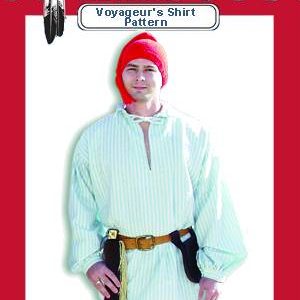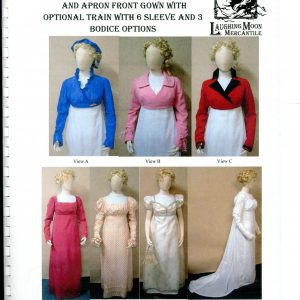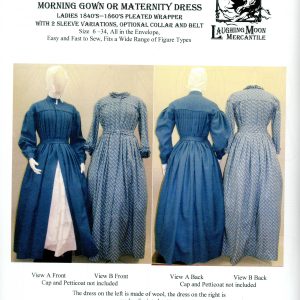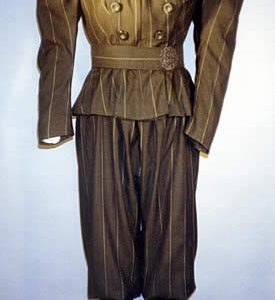$19.00
2 in stock
Description
View A: Round Eared Cap has several variations, including single or double ruffles, and ruffles that are continuous and un-split at top center of the forehead, or that are split at that point. There are also two sizes of caul (back piece) for the woman’s size, which can accommodate different head sizes and hairstyles, and a Girl’s or Small Woman’s size. The caul neckline has a narrow drawstring. c.1740-1810.
View B: Mob Cap is quite adjustable, and is given only in the size of the original caps. The top of the headpiece (front piece) has two delicate drawstrings, and the caul neckline has a narrow drawstring. c. 1740-1820. Worn especially by older women during the early 1800s.
View C: Grand Coiffe is a sheer cotton muslin head covering frequently worn over another cap, such as the round eared cap, sometimes under a hat, and is also worn for un-dress (inside home) without a cap. It can have a very narrow lace trim on the hems. The back of the head has a delicate drawstring, which draws up the triangular cut of the coiffe into a nicely fitting shape. c. 1730-1790.
Mob Cap Style- This style cap dates quite early in the 1700s, but also is used well into the early 1800s. It is especially flattering for “older” women, because it covers the fullness of the chin that seems to come with aging. It is also very nice for cool weather, or damp air.
This pattern is designed after several originals, as well as portraits of women of the period. One portrait that depicts a cap that is particularly similar, and shows the detail, is the portrait painted by Charles Willson Peale of his wife Hannah Moore Peale, 1816.
Gallery photos are of reproduction caps made using this pattern by Kathleen Kannik or Kannik’s Korner. She used cotton organdy, similar to the original fabric, and fine cotton draw strings, which are called “Runners”.
The painting in the one photo was of: Hannah Moore Peale, painted by her husband, Charles Willson Peale, in 1816.
Note the runners on the top of the cap, and the very narrow tape ties.
We are happy and proud to offer Kannik Patterns on our website and feature them in our upcoming Sewing Events and Classes.











